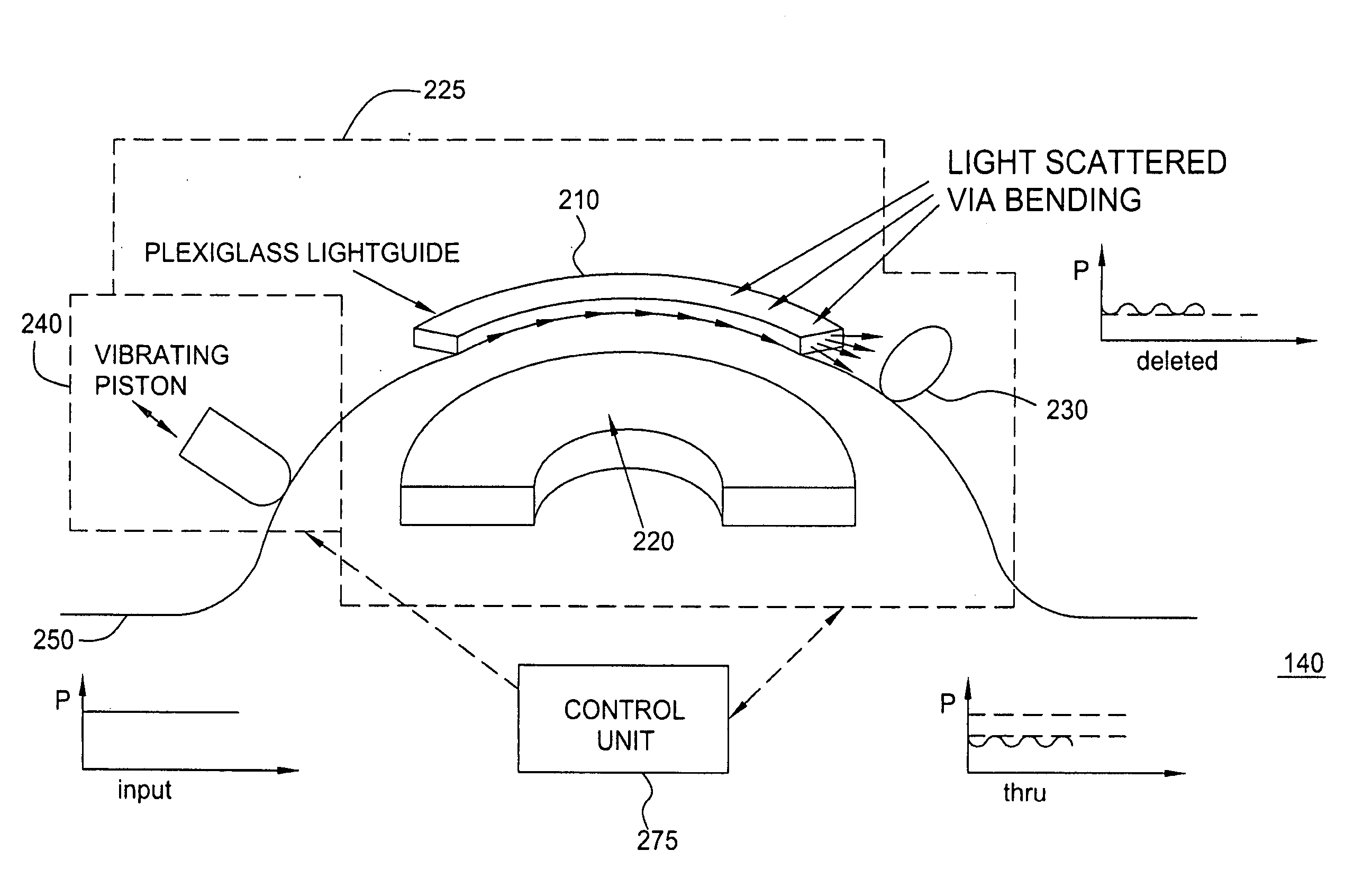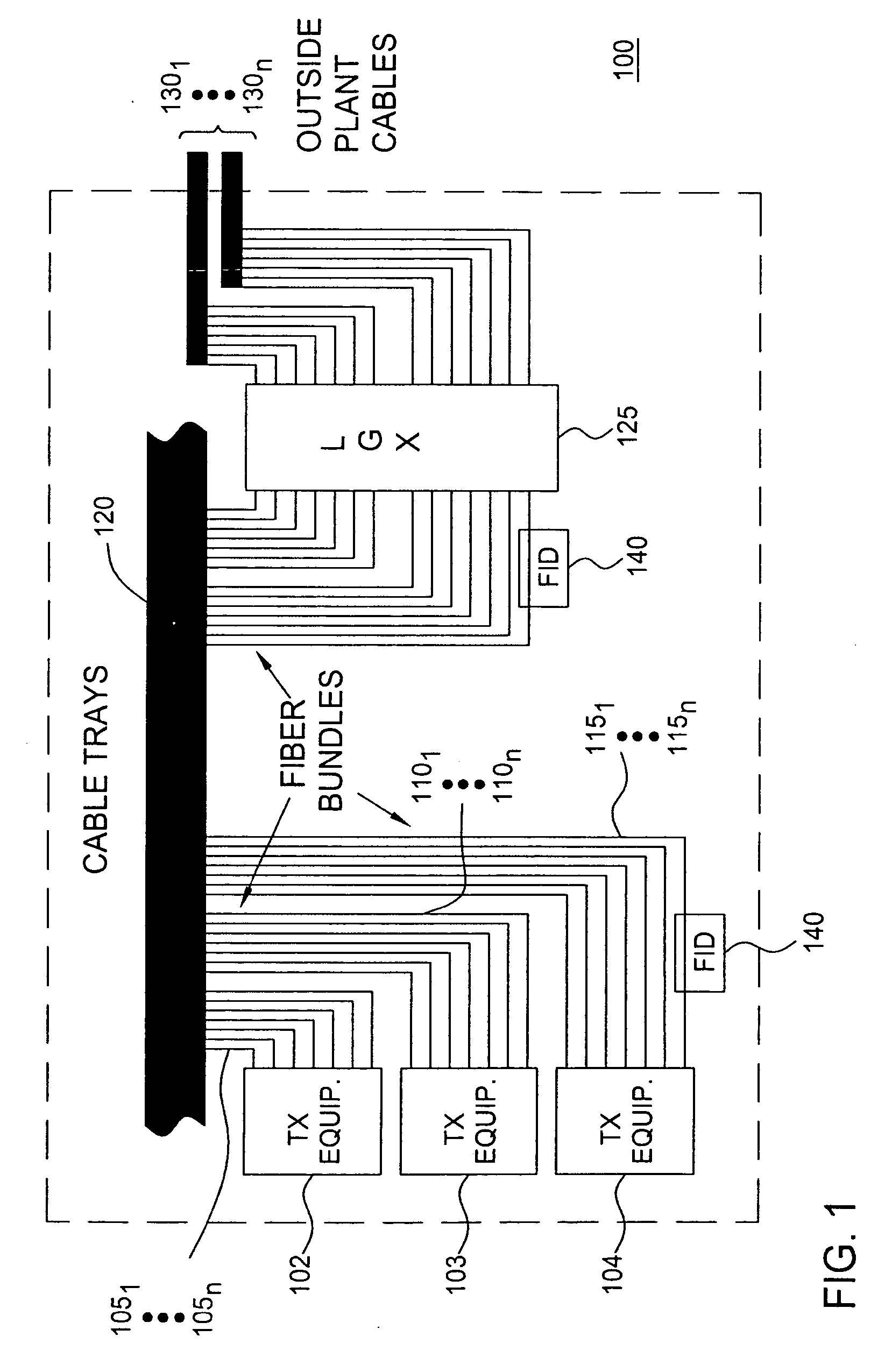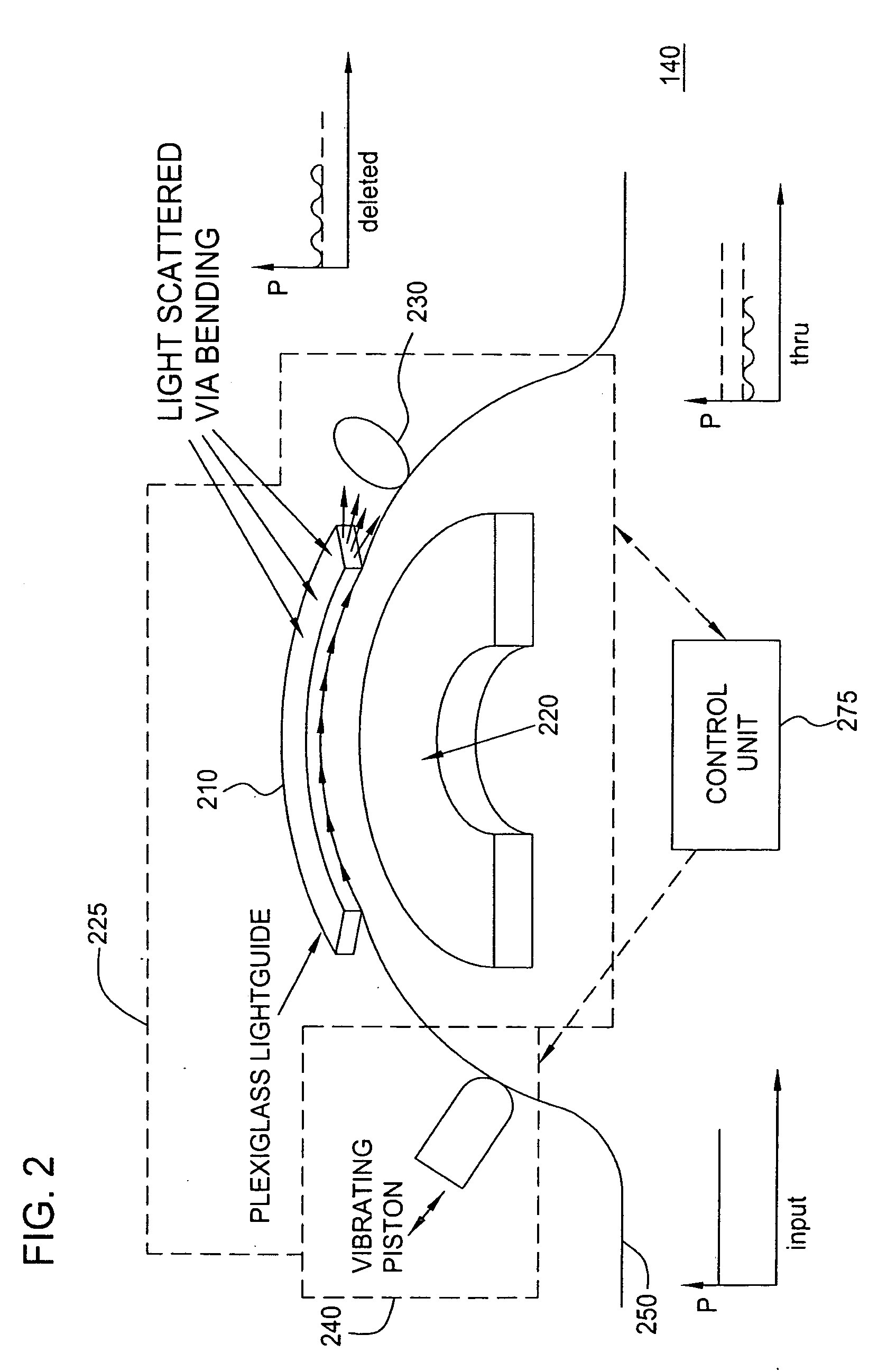Method, apparatus and system for minimally intrusive fiber identification
a fiber identification and minimal intrusion technology, applied in the field of methods, can solve problems such as the management of optical fibers of a telecommunication office, the disruption of service to many circuits, and the simultaneous presence of many customers
- Summary
- Abstract
- Description
- Claims
- Application Information
AI Technical Summary
Benefits of technology
Problems solved by technology
Method used
Image
Examples
Embodiment Construction
[0019] Although various embodiments of the present invention herein are being described with respect to optical fibers within a telecommunications office, it should be noted that the optical fibers and the telecommunications office presented herein are simply provided as exemplary working environments wherein various embodiments of the present invention may be applied and should not be treated as limiting the scope of the invention. It will be appreciated by those skilled in the art informed by the teachings of the present invention that the concepts of the present invention may be applied to a single or multiply-interconnected optical fibers (or waveguides) in substantially any working environment (local or remote) for the identification of the transmission medium.
[0020]FIG. 1 depicts a high level block diagram of a telecommunications office wherein an embodiment of the present invention may be applied. The telecommunications office 100 of FIG. 1 illustratively comprises three rac...
PUM
 Login to View More
Login to View More Abstract
Description
Claims
Application Information
 Login to View More
Login to View More - R&D
- Intellectual Property
- Life Sciences
- Materials
- Tech Scout
- Unparalleled Data Quality
- Higher Quality Content
- 60% Fewer Hallucinations
Browse by: Latest US Patents, China's latest patents, Technical Efficacy Thesaurus, Application Domain, Technology Topic, Popular Technical Reports.
© 2025 PatSnap. All rights reserved.Legal|Privacy policy|Modern Slavery Act Transparency Statement|Sitemap|About US| Contact US: help@patsnap.com



